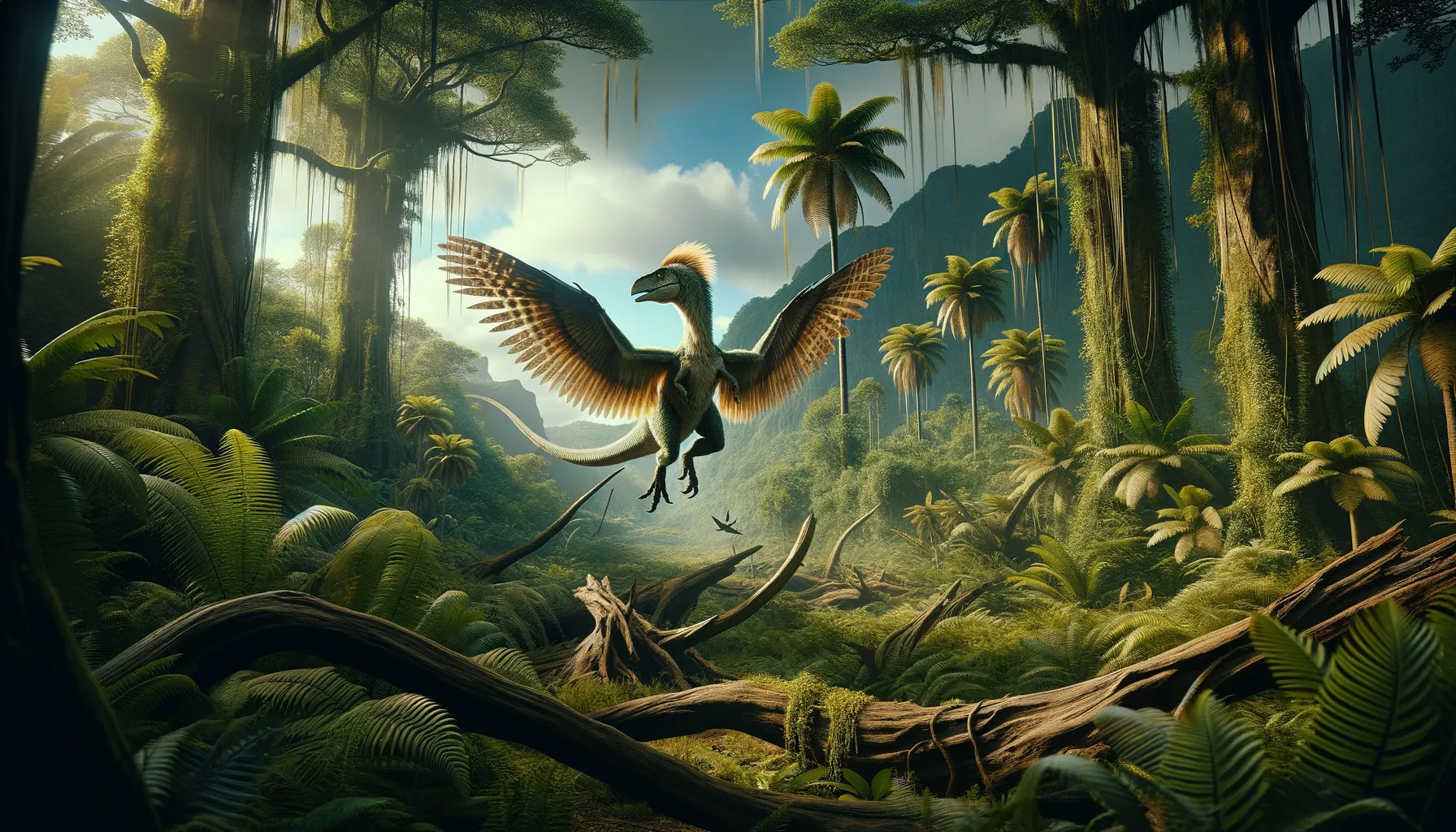
Anchiornis
Swift wings over ancient forests.
Period
Jurassic
Length
About 34 centimeters long.
Height
Around 30 centimeters tall.
Weight
Approximately 0.5 kilograms.
Anchiornis was a small, feathered dinosaur that lived during the Jurassic period. It is known for its wing-like arms and legs covered with feathers, showcasing an evolutionary link between dinosaurs and birds. The discovery of its fossils has provided significant insights into the origins of flight and the evolution of feathers. Anchiornis had a lightweight body, making it well-adapted to life in trees and agile movement.
Diet
Anchiornis likely had an insectivorous diet, feeding on small insects and other invertebrates. Its beak-like snout and sharp teeth suggest it could capture a variety of small prey easily.
Hunting
As a small predator, Anchiornis would have been opportunistic, stalking prey among the trees and undergrowth. Its agile nature enabled quick bursts of speed to capture unsuspecting prey.
Environmental challenges
Anchiornis lived in a world filled with larger predators, making camouflage and speed essential for survival. Its feather coverage might have also been used for thermoregulation in varying temperatures. Additionally, environmental changes such as shifts in climate or vegetation posed ongoing challenges.
Speed
Anchiornis was a quick and agile runner.
Lifespan
Likely around 10 to 20 years.
First discovery
First discovered in China in 2009.
Fun Facts
- Anchiornis was a small, feathered dinosaur that lived around 160 million years ago during the Late Jurassic period.
- Although it was a dinosaur, Anchiornis looked a lot like a bird and even had four wings, with feathers on its arms and legs.
- The name Anchiornis means 'near bird,' highlighting its bird-like characteristics that fascinated scientists.
- Anchiornis was about the size of a modern crow, making it much smaller than many of the dinosaurs that roamed the Earth.
- This dinosaur is known for having feathers with black and white patterns, which might have helped in camouflage or attracting mates.
- Anchiornis fossils were first discovered in China, a country known for yielding many well-preserved feathered dinosaur specimens.
- Anchiornis could potentially glide short distances using its wing-like limbs, providing insights into the evolution of flight.
Growth and Development
Anchiornis hatched from eggs and grew rapidly to navigate the dangers of its environment. Juveniles were vulnerable to predation, so fast growth was necessary for survival. As they matured, they developed more complex feather structures.
Habitat
Anchiornis inhabited forested areas with dense vegetation, providing cover and ample hunting grounds. The trees offered both nesting sites and escape routes from ground-based threats. The habitat was rich in biodiversity, supporting its varied diet.
Interaction with other species
Anchiornis likely competed with other small dinosaurs and mammals for food. Its feathered body could have been used for display and communication with others of its kind. It may have also been prey for larger carnivorous dinosaurs.
Natural lifespan
Its lifespan was probably between 10 to 20 years in the wild.
Reproduction
Anchiornis reproduced by laying eggs, likely in nests constructed in secluded areas for protection. Parental care might have been limited, with juveniles quickly becoming independent. The eggs and hatchlings were vulnerable to various predators.
Social behaviour
Anchiornis might have lived in small groups or solitary, depending on resource availability. Its feathers may have been used for social signaling or mating displays. Communication with conspecifics could have been through visual and auditory cues.
Fossil locations
Anchiornis fossils have been predominantly found in northeastern China, specifically in the Liaoning Province. This region is renowned for its well-preserved fossils due to ancient volcanic ash deposits. The finds provide crucial information into feather evolution and early avian ancestors.
